Concatenation (architecture)
The concatenation (enchainement) is an architectural composition that unites chaining parts together—as with separate elements in long façades, with the fronts being brought forward or recessed.[1]
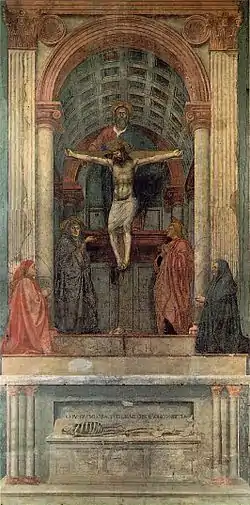
Overview
The concatenation articulates the wall by superimposing elements of the architectural order, such as pilasters or engaged columns, inside which a round arch or a series of arches open.[2] Two hierarchical orders are usually superimposed: the minor order supports the arch, which, in turn, is framed under the entablature of the major order. The concatenation is different from the serliana that usually employs a single order on which both the arches and the architrave rest.
History
As an element of architectural language, the concatenation was common in the Roman architecture both in an isolated form (triumphal arches) and in series. It was also widely used in multi-level buildings, such as Colosseum. As a compositional element, it saw new interest in the first half of the 15th century, becoming a fundamental syntagm of the classical architecture. In the Renaissance architecture, the concatenation was widely used in all types of buildings, internal courtyards, and cloisters. William Kent and other Palladians favoured concatenated façades for their articulation.[3][4][5]
Gallery
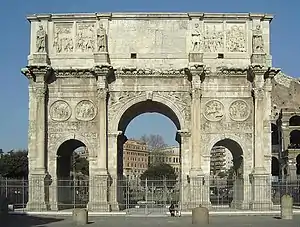 Arch of Constantine, Rome
Arch of Constantine, Rome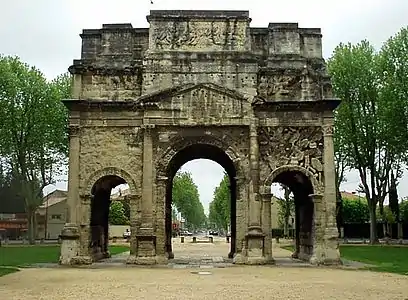
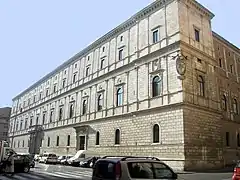 Façade of the Palazzo della Cancelleria in Rome
Façade of the Palazzo della Cancelleria in Rome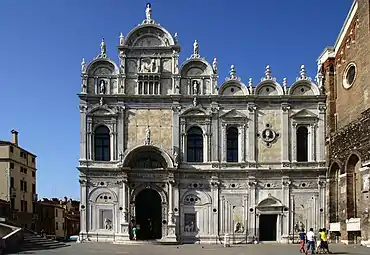
 Cloister of the Convent of Christ, Tomar, Portugal, (1557–1591), Diogo de Torralva and Filippo Terzi.
Cloister of the Convent of Christ, Tomar, Portugal, (1557–1591), Diogo de Torralva and Filippo Terzi.
References
- Curl, James Stevens; Wilson, Susan (2015). The Oxford Dictionary of Architecture. OUP Oxford. p. 189. ISBN 978-0-19-105385-6. Retrieved 5 August 2020.
- Capellini, Lorenzo; Cardini, Domenico; Cresti, Carlo (1998). Florence. Umberto Allemandi. p. 94. ISBN 978-88-422-0790-0. Retrieved 5 August 2020.
- Curl, James Stevens; Wilson, Susan (2015). The Oxford Dictionary of Architecture. Oxford University Press. p. 549. ISBN 978-0-19-967498-5. Retrieved 5 August 2020.
- Harris, John; Architects, Royal Institute of British (1982). The Palladians. Trefoil Books. p. 76. ISBN 978-0-8478-0421-4. Retrieved 5 August 2020.
- Wilson, Mabel O. (2019). Thomas Jefferson, Architect: Palladian Models, Democratic Principles, and the Conflict of Ideals. Yale University Press. p. 36. ISBN 978-0-300-24620-9. Retrieved 5 August 2020.
